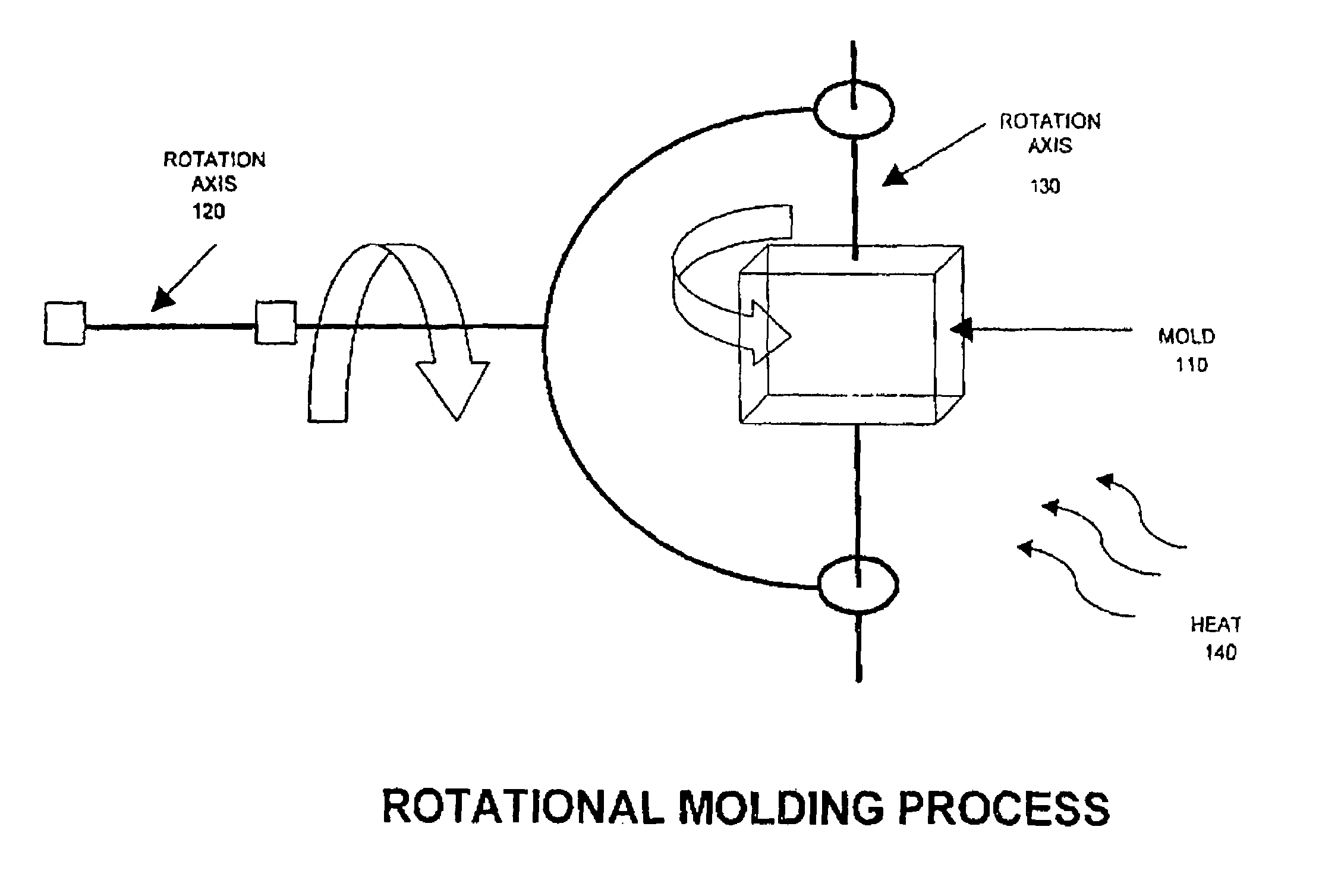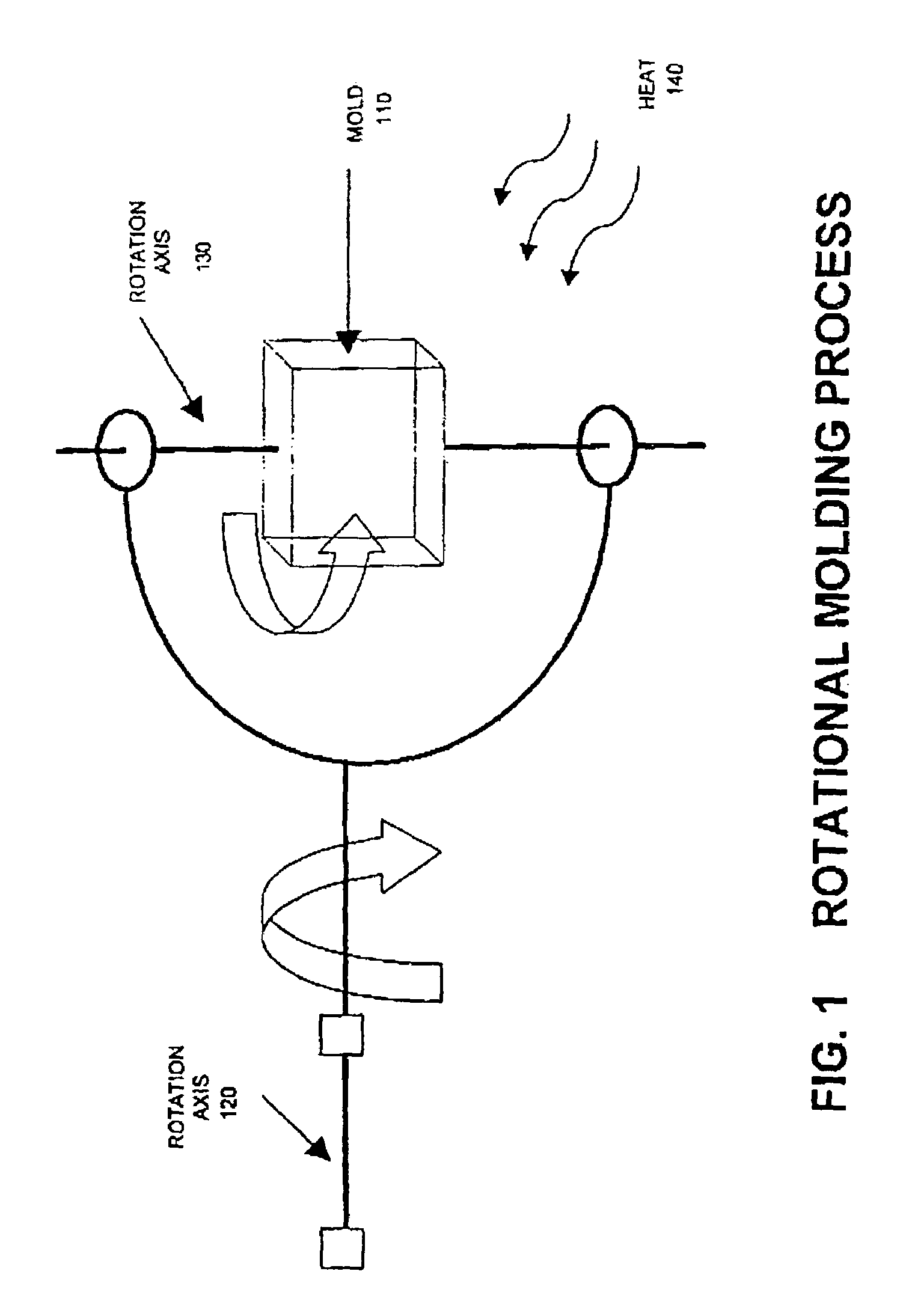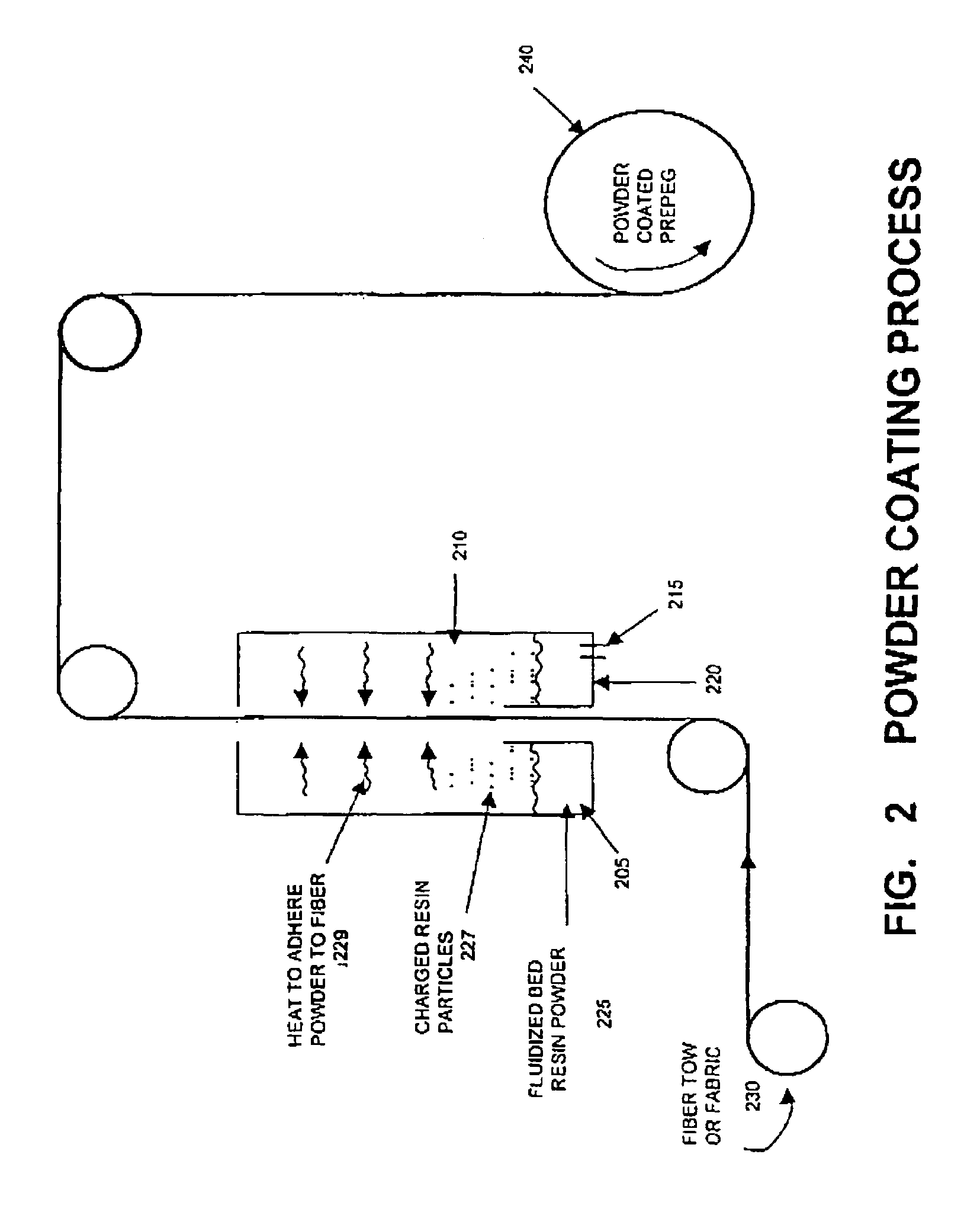Blends containing macrocyclic polyester oligomer and high molecular weight polymer
a polyester oligomer and macrocyclic technology, applied in the field of thermoplastics and articles, can solve the problems of inability to reduce the friability of the mixture prior, and the shelf life of the blend prepared according to these methods is long, so as to improve the handling and processing
- Summary
- Abstract
- Description
- Claims
- Application Information
AI Technical Summary
Benefits of technology
Problems solved by technology
Method used
Image
Examples
experimental examples
VII. Experimental Examples
[0107]Examples of the addition of a high-molecular weight polymer into MPO to produce blend materials with increased viscosity were performed with various linear and cross-linked polymers. Examples 1–5 illustrate methods of producing blends of MPO and high molecular weight polymer and demonstrate the increased viscosity and high friability of blends of MPO and high molecular weight polymer. Examples 6–8 illustrate methods of producing blends of MPO, high molecular weight polymer, and polymerization catalyst. These blends are then polymerized to demonstrate the satisfactory percent conversion, polymerization rate, and resulting polymer molecular weights achieved using the friable, one-component, ready-to-polymerize blends. Examples 9 and 10 illustrate methods of dispersing and polymerizing blends of MPO, high density polyethylene (HDPE), and polymerization catalyst via extrusion. The blend materials in Examples 9 and 10 are not prepared via melt-mixing, but ...
example 1
[0110]A first formulation containing 5 wt. % poly(vinyl butyral-co-vinyl alcohol-co-vinyl acetate) was prepared by melt mixing 24.0 grams of MPO-1 and 6.0 grams of poly(vinyl butyral-co-vinyl alcohol-co-vinyl acetate) (Mw=100,000, 80 wt. % vinyl butyal, 18–20 wt. % vinyl alcohol and 0–1.5 wt. % vinyl acetate). The two ingredients were added to a 100 mL three-neck round-bottomed flask equipped with a mechanical stirrer and nitrogen / vacuum inlet. The flask was then immersed into an oil bath preheated to 190° C. Upon heating, the MPO-1 melted and the high molecular polymer dissolved in the molten MPO-1 to form a clear viscous solution. The solution was subsequently dried under vacuum at 190° C. for 5 minutes and then poured into an aluminum tray. The tray was cooled in an 80° C. oven for 30 minutes to allow the mixture to solidify. The solidified material was ground to produce a friable MPO formulation containing about 20 wt. % poly(vinyl butyral-co-vinyl alcohol-co-vinyl acetate).
example 2
[0111]A second formulation (Example 2) containing 20 wt. % poly(butyl methacrylate-co-methyl methacrylate) was prepared by melt mixing 24.0 grams of CBT® and 6.0 grams of poly(butylmethacrylate-co-methyl methacrylate) (Mw=100,000, the molar ratio of butyl methacrylate and methyl methacrylate is 1.4). The two ingredients were added to a 100 mL three-neck round-bottomed flask equipped with a mechanical stirrer and nitrogen / vacuum inlet. The flask was then immersed into an oil bath preheated to 190° C. Upon heating, the MPO-1 melted and the high molecular polymer dissolved in the molten MPO-1 to form a clear viscous solution. The solution was subsequently dried under vacuum at 190° C. for 5 minutes and then poured into an aluminum tray. The tray was cooled in an 80° C. oven for 30 minutes to allow the mixture to solidify. The solidified material was then ground to produce a friable two-part MPO formulation containing 20 wt. % poly(butyl methacrylate-co-methyl methacrylate).
PUM
| Property | Measurement | Unit |
|---|---|---|
| Temperature | aaaaa | aaaaa |
| Temperature | aaaaa | aaaaa |
| Temperature | aaaaa | aaaaa |
Abstract
Description
Claims
Application Information
 Login to View More
Login to View More - R&D
- Intellectual Property
- Life Sciences
- Materials
- Tech Scout
- Unparalleled Data Quality
- Higher Quality Content
- 60% Fewer Hallucinations
Browse by: Latest US Patents, China's latest patents, Technical Efficacy Thesaurus, Application Domain, Technology Topic, Popular Technical Reports.
© 2025 PatSnap. All rights reserved.Legal|Privacy policy|Modern Slavery Act Transparency Statement|Sitemap|About US| Contact US: help@patsnap.com



